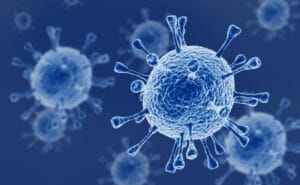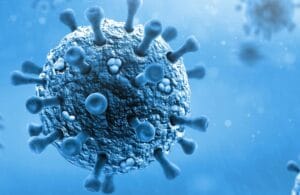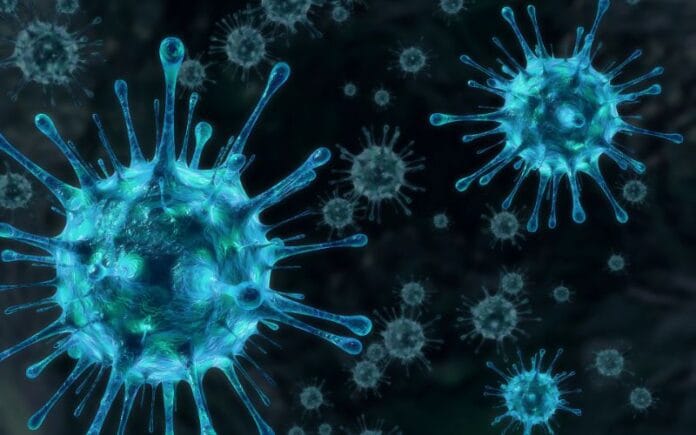Respiratory infections are a growing concern, especially with the emergence of new viruses like Human Metapneumovirus (HMPV).
These infections can range from mild cold-like symptoms to severe respiratory illnesses, posing a significant risk to vulnerable populations.
In this article, we delve into the symptoms, causes, and prevention of the HMPV virus, offering a comprehensive guide for understanding and managing its impact.
What is HMPV Virus?

Human Metapneumovirus (HMPV) is a respiratory pathogen first identified in 2001 in the Netherlands. It belongs to the Pneumoviridae family, closely related to the Respiratory Syncytial Virus (RSV).
HMPV primarily causes respiratory infections, ranging from mild cold-like symptoms to severe lower respiratory tract diseases such as bronchiolitis and pneumonia.
The virus is prevalent worldwide and affects individuals across all age groups, with heightened susceptibility observed in young children, the old, and immunocompromised individuals.
Studies indicate that most children contract HMPV by the age of five, often leading to reinfections later in life due to incomplete immunity.
The virus is enveloped and contains a negative-sense single-stranded RNA genome, which facilitates its replication within host cells.
Despite its relatively recent discovery, retrospective analyses have detected HMPV in human respiratory samples dating back several decades, suggesting it has been circulating unnoticed for a considerable period.
How Does HMPV Virus Spread?
HMPV is highly contagious and spreads through respiratory droplets when an infected person coughs or sneezes.
Transmission can also occur via direct contact with contaminated surfaces, followed by touching the face, especially the nose or mouth. The virus is stable on surfaces for several hours, increasing the risk of indirect transmission.
Close-contact settings, such as households, schools, and healthcare facilities, are common environments for HMPV outbreaks.
The incubation period ranges from 3 to 6 days, during which individuals may transmit the virus even before the onset of symptoms. Seasonal patterns have been observed, with higher incidence rates during late winter and early spring.
Preventive measures include practicing good hand hygiene, avoiding close contact with infected individuals, and disinfecting commonly touched surfaces to reduce the risk of transmission.
What Are the Symptoms of HMPV Virus?

HMPV infections present a range of symptoms that vary from mild to severe, depending on the patient’s age, immune status, and overall health.
Common Symptoms
- Fever
- Runny or congested nose
- Cough
- Sore throat
- Fatigue
Severe Symptoms
- Wheezing
- Difficulty breathing
- Chest pain
- Rapid breathing
- Cyanosis (bluish discoloration of the skin due to low oxygen levels)
These severe symptoms are more common in infants, old individuals, and those with compromised immune systems.
Symptoms usually appear 3 to 6 days after exposure and last for about a week, though complications like pneumonia or bronchitis may prolong recovery.
Who Is Most at Risk of Contracting HMPV?
While HMPV can infect individuals of all ages, certain populations are more vulnerable to severe outcomes:
- Infants and Young Children: Their developing immune systems make them more susceptible to serious infections, including bronchiolitis and pneumonia.
- Old Individuals: The natural decline in immunity with age increases the risk of complications.
- Immunocompromised Patients: People undergoing cancer treatment, organ transplants, or living with conditions like HIV/AIDS face a higher likelihood of severe infections.
- Individuals with Chronic Lung Diseases: Those with asthma, COPD, or other chronic conditions are at greater risk.
- Healthcare Workers and Caregivers: Frequent exposure to infected patients increases their chances of contracting the virus.
Identifying at-risk groups helps focus preventive strategies, such as vaccination (once available) and early medical intervention.
How Is HMPV Virus Diagnosed?

Diagnosing HMPV requires a combination of clinical evaluation and laboratory testing. Physicians begin by assessing the patient’s symptoms and medical history, followed by diagnostic tests to confirm the presence of the virus.
Common Diagnostic Methods
- PCR (Polymerase Chain Reaction): A highly sensitive test that detects HMPV’s genetic material in respiratory samples like nasal or throat swabs.
- Antigen Detection Tests: These tests identify viral proteins, providing faster results but with slightly lower sensitivity compared to PCR.
- Viral Culture: Although less commonly used, this involves growing the virus in a controlled environment to confirm its presence.
- Serology: Measures antibodies against HMPV to determine past or recent infections, useful in epidemiological studies.
Healthcare providers also use chest X-rays or CT scans to identify complications like pneumonia. Early and accurate diagnosis enables timely treatment and helps prevent the spread of the virus, especially in vulnerable populations.
What Are the Treatment Options for HMPV?
Currently, there are no specific antiviral medications or vaccines available for HMPV. Treatment focuses on alleviating symptoms and managing complications.
Supportive Care
- Adequate rest and hydration
- Over-the-counter medications to reduce fever and pain, such as paracetamol or ibuprofen
- Nasal saline sprays to relieve congestion
- Use of humidifiers to ease breathing
Hospitalisation
Treatment might include:
- Oxygen therapy for respiratory distress
- Intravenous fluids to prevent dehydration
- Mechanical ventilation in extreme cases
Research is ongoing to develop targeted antiviral therapies and vaccines to prevent HMPV infections in the future.
How Can HMPV Virus Be Prevented?

Preventing HMPV involves a combination of personal hygiene practices, public health measures, and awareness campaigns.
Key Preventive Strategies
- Regular handwashing with soap and water.
- Avoiding contact with individuals exhibiting respiratory symptoms.
- Practising respiratory etiquette, such as covering the mouth and nose when coughing or sneezing.
- Disinfecting surfaces and shared objects frequently.
- Staying home when feeling unwell to prevent spreading the virus to others.
Until vaccines become available, public health awareness and community-level interventions are vital in mitigating HMPV outbreaks.
How Does HMPV Compare to Other Respiratory Viruses?
HMPV shares similarities with several other respiratory viruses, including RSV, influenza, and the common cold. However, there are distinct differences:
| Feature | HMPV | RSV | Influenza | Common Cold |
| Primary Age Group Affected | All ages, esp. children | Infants, old peoples | All ages | All ages |
| Seasonality | Late winter, early spring | Winter, early spring | Winter | Year-round |
| Symptoms | Mild to severe | Similar to HMPV | Fever, aches, chills | Runny nose, sore throat |
| Vaccine Available | No | No | Yes | No |
Understanding these distinctions helps clinicians provide more targeted treatment and prevention strategies tailored to each virus.
Conclusion
Human Metapneumovirus (HMPV) is a respiratory virus that affects individuals of all ages, with serious consequences for at-risk populations.
Understanding the virus’s symptoms, transmission, and preventive measures is crucial in curbing its spread.
While specific antiviral treatments are unavailable, supportive care and good hygiene practices remain key to managing infections.
Continued research and public health efforts aim to develop vaccines and improve treatment options in the near future.
FAQs
How is HMPV transmitted?
HMPV spreads through respiratory droplets, close contact with infected individuals, or touching contaminated surfaces.
What are the common symptoms of HMPV?
Common symptoms include fever, cough, nasal congestion, sore throat, and fatigue, often resembling a cold.
How is HMPV diagnosed?
HMPV is diagnosed through tests like PCR, antigen detection, or viral culture from respiratory samples.
Is there a vaccine for HMPV?
Currently, there is no vaccine for HMPV, but researchers are working to develop one.
How can HMPV infections be prevented?
Good hygiene practices, avoiding contact with infected individuals, and disinfecting surfaces can help prevent HMPV.
